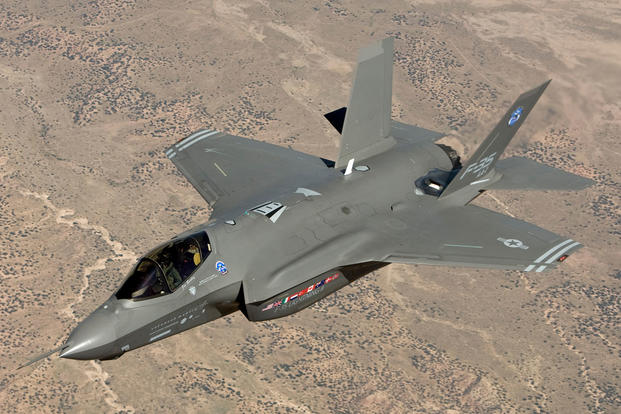The F-35 Joint Strike Fighter will deploy to the Middle East for operations against Islamic State fighters in Iraq and Syria -- but not for a few more years, the head of Air Combat Command said Friday.
"The plan is a few years out. It's not going to happen this year," Air Force Gen. Herbert "Hawk" Carlisle told reporters during a breakfast in Washington, D.C.
The general's comments come days before Defense Secretary Jim Mattis is set to unveil his plan to speed up the fight against the Islamic State of Iraq and Syria, at President Donald Trump's behest, perhaps with the assistance of more U.S. troops on the ground.
The Trump administration has been vocal about its goal to "obliterate" ISIS much more swiftly than the ongoing air campaign, which began in 2014, is accomplishing.
Trump -- calling the current momentum of defeating ISIS "a disaster" -- previously on the campaign trail vowed to the American public crushing the terrorist group would happen under his administration.
Depending on the new military plan, and Trump’s hope to ramp-up operations, the question remains when or even if the F-35 Lightning II would deploy to the Middle East for anti-ISIS operations.
The F-35A first will "get moving in the spring to summer time" this year to Europe for a deployment, and then to the Pacific for a longer deployment, like a theater security package, Carlisle said, echoing the comments of Maj. Gen. Jerry D. Harris Jr., the service's deputy chief of staff for strategic plans, programs and requirements, last week before the House Armed Services subcommittee on tactical air and land forces.
"But we have plans to send it to the Middle East in the not-too-distant future," Carlisle added. "It would deploy as an asset for the [Combined Forces Air Component commander] at Al Udeid [Qatar], so he would use it as he would see fit, and I would certainly expect it to participate in operations just like the F-22 is today."
The driving factor to use the F-35 is the complex and dense environment in Syria -- to penetrate surface-to-air threats, but "it also brings so much more to the fight. The situational awareness of the platform, the sensor suite that the platform has, the electronic attack capability … brings a lot of assets that would … aid in the fight," Carlisle said.
The air-to-air F-22 Raptor fighter has been a "quarterback" of the air war against ISIS, officials have said, because of its saturating sensor capability to collect information to send back to other aircraft operating in the area of responsibility.
While an air-to-ground capability, the F-35 too has exceptional "situational awareness … and sensor fusion because of the capability inside that airplane," Carlisle said.
Together, F-22s and F-35s "make every other airplane in the battlespace better," he said.
Furthermore, "We've stood down F-16 squadrons at [Hill Air Force Base, Utah] and put in F-35s. I need to rotate them," Carlisle said of the increased demand for more fighters overall.
"As soon as those [F-35s] are ready to go, we're going to start using them," he said.
-- Oriana Pawlyk can be reached at oriana.pawlyk@military.com. Follow her on Twitter at @Oriana0214.
Related Video:
Don't Miss a Single Military.com Story
To read the full article and get exclusive benefits, sign up today.
It’s FREE
Why am I seeing this? Visit our FAQs



























